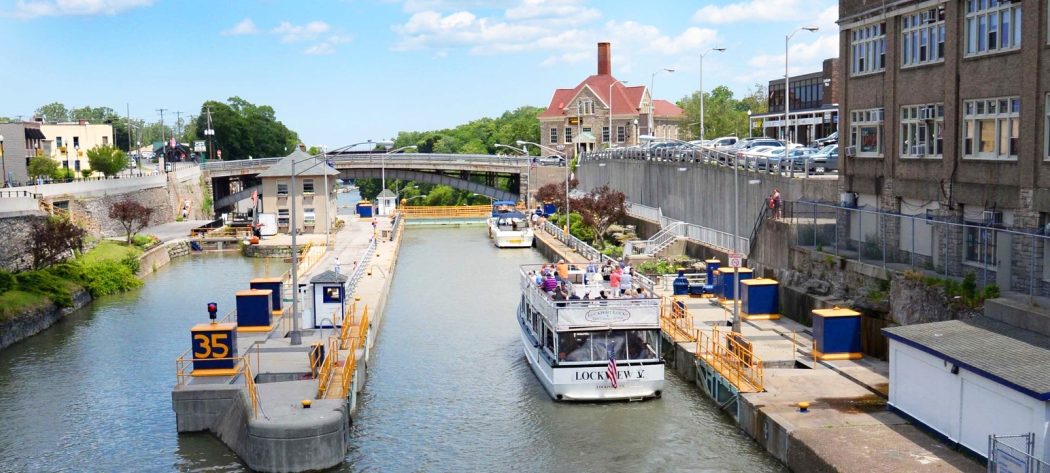Today’s New York State Canal System is a 524-mile network comprising the Erie Canal, the Oswego Canal, the Cayuga-Seneca Canal and the Champlain Canal.
Constructed between 1905 and 1918 as the Barge Canal, the four branches of the Canal System are direct successors to the canals that New York State began building in 1817 and that established New York’s commercial primacy by connecting New York City to the Great Lakes and the Midwest.
Earlier this year, the New York Power Authority (NYPA) assumed control of the Canal System from the New York State Thruway Authority. NYPA is the nation’s largest public power authority and runs 16 power-generating plants, including three hydroelectric facilities on the Erie Canal.
NYPA has initiated a strategic planning process to assure the long-term vitality of the Canal System; as part of this process, NYPA and the New York State Canal Corporation (Canal Corporation) have launched the Reimagine the Canals Competition.
Opportunities and Challenges
The Canal System is one of the most transformative public works projects in American history. The entire system was listed as a National Historic District on the National Register of Historic Places in 2014 and designated as a National Historic Landmark in 2017 for its role in shaping the American economy and urban development.
Despite its past success, vessel traffic on the Canal System has steadily declined over the last century. Deindustrialization and competition from rail, pipelines, roadways and the St. Lawrence Seaway, put the Canals at a disadvantage in transporting freight.
Today, commercial traffic is limited and represents only a small fraction of the millions of tons of cargo once shipped annually. Due, in part, to the population decline in certain communities along the Canal System, pleasure boating activity levels have likewise fallen and are today only half what they once were.
Yet, despite the decreasing volumes of commercial and recreational traffic, the Canal System’s infrastructure – including locks, guard gates, and lift bridges – requires continued maintenance and investment to guarantee safe passage.
In contrast to the decreasing maritime activity on the Canal System, recreational uses along it – from hiking and bicycling in spring, summer, and fall to cross-country skiing and ice fishing in winter – have grown in popularity.
The 750-mile Empire State Trail, which will run from New York City to Canada and from Albany to Buffalo, is expected to be completed in 2020. It will further enhance opportunities for recreation along portions of the Canal System. To date, however, much of the Canal System’s potential to stimulate tourism and economic activity in the communities along its corridor remains untapped.
Competition Goals
To address the challenges and opportunities facing the Canal System, the Competition seeks visionary ideas for physical infrastructure projects as well as programming initiatives that promote:
- the Canal System as a tourist destination and recreational asset;
- sustainable economic development along the canals and beyond;
- the heritage and historic values of the Canal System;
- the long-term financial sustainability of the Canal System
Solutions that recognize the Canal System’s historic ties to its communities while enhancing its long-term financial sustainability are of particular interest. Ideas that consider a specific section of the Canal System are encouraged, though submissions may also be site-specific or address the Canal System in its entirety.
A jury of experts from a variety of related fields will assist NYPA and the Canal Corporation in shortlisting a group of finalists and in making recommendations for final awards.
Submission deadline is January 5, 2018.

